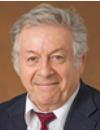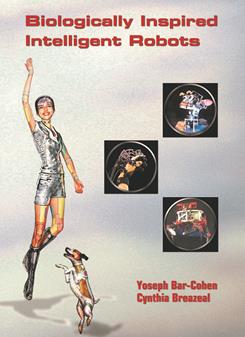
Dr. Yoseph Bar-Cohen is a Senior Research Scientist and Group Supervisor at JPL. He is also a Fellow of two technical societies, SPIE and ASNT. In his NDEAA lab (http://ndeaa.jpl.nasa.gov/), which he established in 1991, many novel methods and mechanisms were developed. He received his Ph. D. in Physics (1979) from the Hebrew University, Jerusalem, Israel. He (co)authored over 380 publications, has 32-registered patents, he is the Editor and coauthor of 9 books, and he chaired (co)Chaired 48 Conferences and Symposia. He made two notable discoveries of ultrasonic wave phenomena in composite materials: the leaky Lamb waves (LLW) (1983) and the polar backscattering (1983). He is the initiator of the SPIE Conf. on electroactive polymers (EAP), chairing it since 1999, and his challenge wrestling match between an arm driven by EAP and human has become an annual highlight. In April 2003, Business Week named him as one of five technology gurus who are "Pushing Tech's Boundaries." Nondestructive Testing (ASNT). His scientific, engineering and technology accomplishments and leadership have earned him two NASA Honor Award Medals - NASA Exceptional Engineering Achievement Medal (2001), and NASA Exceptional Technology Achievement (2006), the JPL’s Magellan Award (2016) for extraordinary work in advancing the field of electroactive materials and mechanisms, two SPIE’s Lifetime Achievement Awards – NDE (2001) and Smart Materials and Structures (2005), the ASNT’s 2002 Lester Honor Lecture Award, the 2006
Visiting Lecturer Titles:
Biomimetics - Biologically Inspired Technologies.
Electroactive Polymer (EAP) Actuators as Artificial Muscles - Reality, Potential and Challenges
Humanlike Robots.
Planetary Sample Handling Using the Ultrasonic/Sonic Driller/Corer (USDC) Mechanism.
Visiting Lecturer Titles:
Biomimetics - Biologically Inspired Technologies.
Electroactive Polymer (EAP) Actuators as Artificial Muscles - Reality, Potential and Challenges
Humanlike Robots.
Planetary Sample Handling Using the Ultrasonic/Sonic Driller/Corer (USDC) Mechanism.
This will count as one of your downloads.
You will have access to both the presentation and article (if available).
Auto-Gopher: a wireline deep sampler driven by piezoelectric percussive actuator and EM rotary motor
This will count as one of your downloads.
You will have access to both the presentation and article (if available).
This course will provide an overview of the field of EAP covering the state of the art, challenges and potential. Three general classes of polymer materials are described, namely those that involve ionic mechanisms (Ionic EAP including gels), field activated materials (Electronic EAP) and torsional actuators (typically thermally or electrothermally driven). The basic mechanisms responsible for the active behavior of EAP materials will be covered and compared with natural muscles. Analytical models, fabrication processes and methods of characterizing these materials will be described. Moreover, the currently considered applications will be reviewed including actuators, robotics, animatronics, energy harvesting, medical, and biologically inspired mechanisms, so called biomimetics.
The course begins with an overview of the field, current capabilities, potential and challenges. The course follows with a description of the currently available EAP materials and principles of operating them as actuators and artificial muscles. The course ends with a review of the future prospect of EAP as actuators and sensors in systems, mechanisms and smart structures for industrial and medical applications.
This course provides an overview of EAP--the state of the art, challenges and potential. The materials used for the two major categories, ionic and electronic types, are explained. The basic mechanisms responsible for the electroactive behavior of EAP materials are compared with natural muscles. Analytical models, fabrication processes and how to characterize these materials are described. Current applications are reviewed including actuators, robotics, animatronics, medical, and biologically inspired mechanisms, called biomimetics. The course ends with a discussion of the future prospects of EAP as actuators in systems, mechanisms and smart structures for space, industrial and medical applications.
View contact details
No SPIE Account? Create one



